Ground covers are important to woodland ecology. They provide shelter, absorb rainwater and help keep the soil from eroding. Species that flower and produce berries feed bees and other pollinators, song and game birds, box turtles, and mammals, both large and small.
While the winter woods can appear somewhat gray and bleak in New England, there are several perennial ground covers that remain green all year. Here are four of them that are commonly referred to as ‘wintergreens.’ All are found in acidic soils of eastern hardwood and pine forests. They bloom with small white flowers in spring and summer and produce berries later in the season.
American wintergreen (Gaultheria procumbens), also called eastern teaberry, is very fragrant and the original source of wintergreen flavoring in gum, candy, and medicines. Most wintergreen flavors nowadays are synthetically made. Wintergreen blooms mid to late summer and is pollinated by bumblebees, though the plants can self-pollinate if bees are not present. The leaves, which are waxy and leathery, are strongly aromatic, and the red berries last into winter. All parts of the plant are consumed by wildlife.
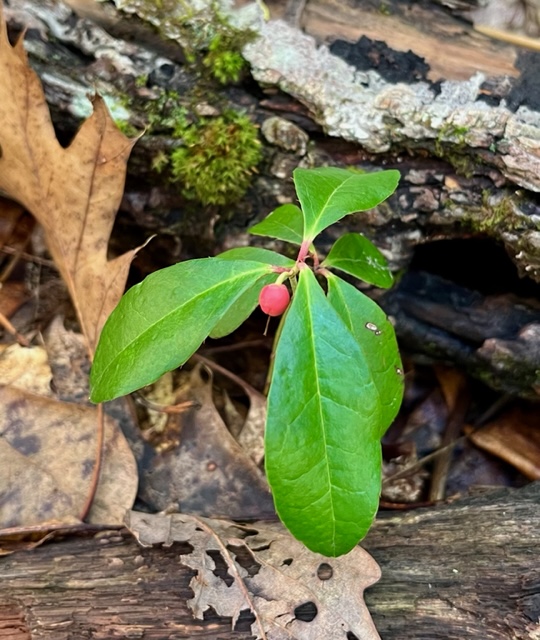
American wintergreen
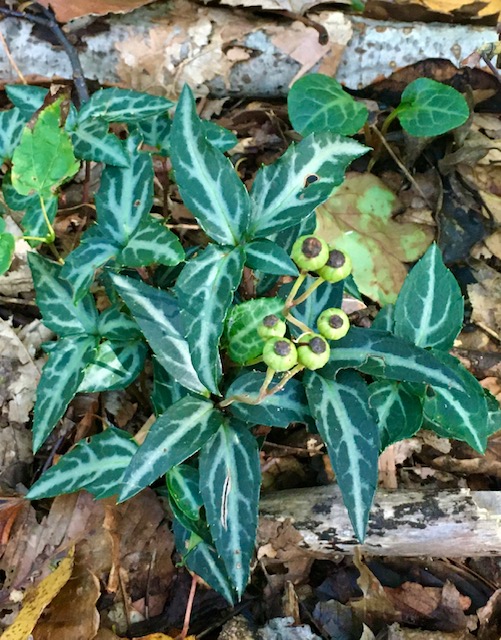
Striped wintergreen
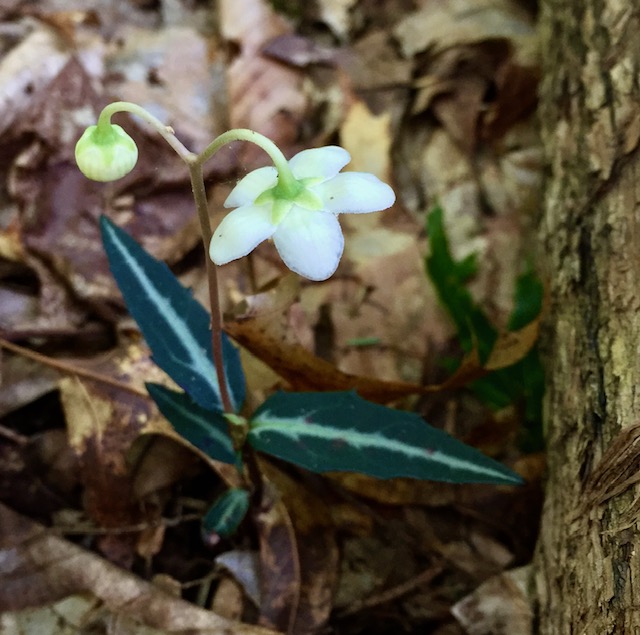
Striped wintergreen in flower
Striped wintergreen (Chimaphila maculata), also referred to as spotted wintergreen, is identified by its dark green elongated leaves with a lighter stripe down the middle. This plant is native to eastern North America and is common in Connecticut. Small, waxy bell-shaped flowers (usually two per stalk) appear in June and July, followed by erect fruits which turn from green to brown as they ripen. Striped wintergreen has traditionally been used in herbal remedies for arthritis and inflammation.
Round-leaved wintergreen (Pyrola rotundifolia) is native to Europe, Russia, and Asia and is well-adapted to thriving in our eastern forests. It is often found growing in the vicinity of striped wintergreen, though it can tolerate wetter soils. The leaves are bright green, round, and heavily veined. The flower stalks produce abundant bell-shaped blooms that ripen into green berries. This plant has also been traditionally used as an herbal remedy with a diuretic, antiseptic and astringent properties.
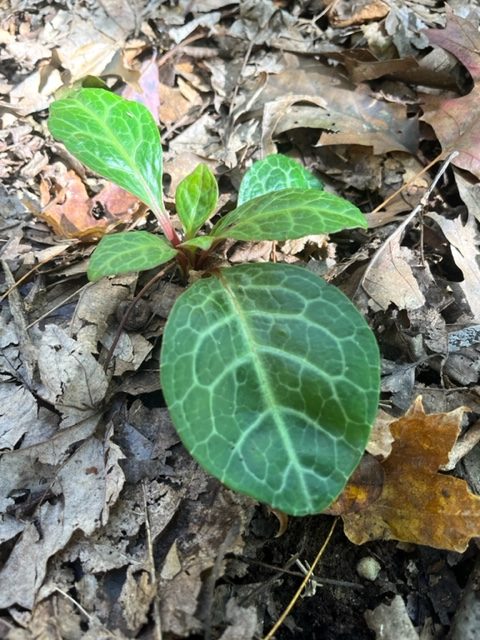
Round-leaved wintergreen
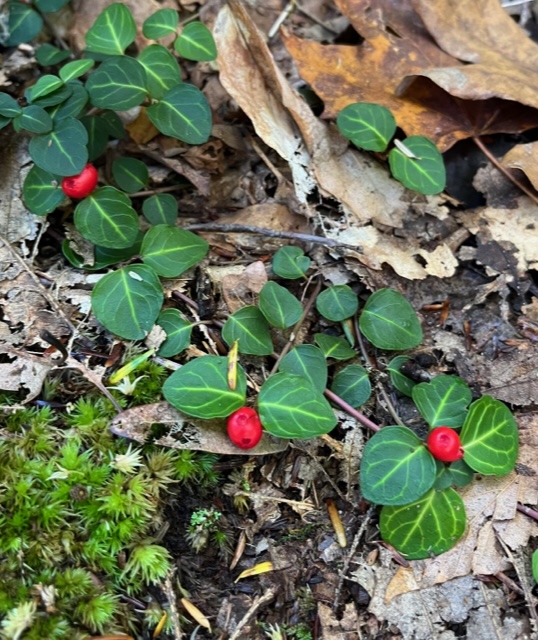
Partridgeberry
Partridgeberry (Mitchella procumbens) is often confused with American wintergreen though the leaves are much smaller. Partridgeberry grows prostrate on the ground as a creeping vine. The white trumpet-shaped flowers bloom in pairs and are primarily pollinated by bumblebees. Each set of flowers produces one berry. The flowers are sweetly scented, while the berries are said to be bland tasting. Native Americans once made tea from the leaves to aid in childbirth, hence the old-fashioned moniker ‘squaw berry.’
The wintergreens are different genera of the heath family, including azalea, rhododendron, and blueberries. Partridgeberry is attributed to both the heath and madder families, depending on the source.
Next time you are out walking in the winter woods, see if you can find these little treasures growing underfoot.
Recent Comments